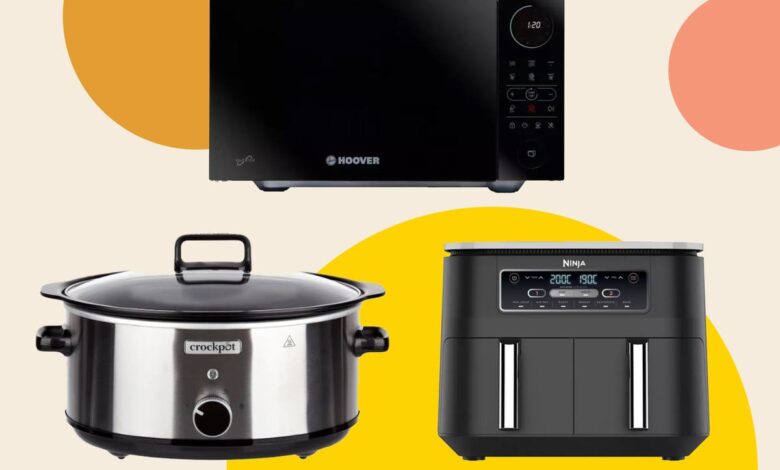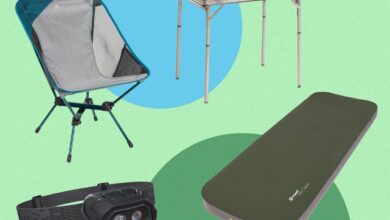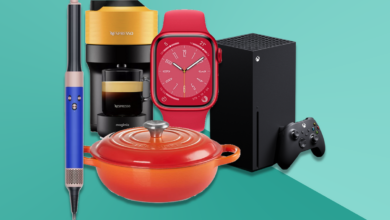An expert-led guide to energy-efficient kitchen appliances

Against the backdrop of the highest inflation rates in 40 years and a cost of living crisis, UK households face a leap in energy prices. The price cap, set by the regulator Ofgem, will increase by 80 per cent from October.
This will see the average household’s annual energy bill increase to £3,549 from £1,971. While those on a pre-payment meter, who are often the most vulnerable households, will be even harder hit, with their bills rising to £3,608. An even steeper upward trajectory is projected for 2023.
With the cost of living going up exponentially, we’re all looking for ways to reduce our consumption. Joanna O’Loan, knowledge manager at Energy Saving Trust, a non-profit dedicated to energy efficiency and low carbon solutions, told The Independent that “around four per cent of your energy bill is spent on powering kitchen appliances”. But, research by energy provider Utilita noted that you could save £604 per year by switching to more energy-efficient appliances, such as an air fryer and microwave.
What is an energy-efficient appliance? Essentially, it’s an appliance that will use the “least amount of energy during each use when compared to similar appliances”, says O’Loan. For example, an “electric oven is the most energy-intensive way of cooking”, while microwaves, for example, “are relatively cheap cooking appliances, as they only heat your food, rather than the air around it”.
In terms of what you should bear in mind when buying a new appliance, O’Loan notes that energy labels “will tell you how much energy that appliance uses”. The scale ranges from A to G, with A being the most efficient, but not all appliances have this certification.
As such, you may wish to calculate how much power your appliances consume, you can do this “by multiplying the appliance’s power rating in kW by the time you leave the appliance on”. For example, a “microwave may have a power rating of 700W and you may run it for three minutes”, so O’Lean notes you must multiply 0.7 by three then divided by 60 to find out its consumption, in this case, a 700W microwave uses 0.035 kWh.
When it comes to choosing the most energy-efficient kitchen appliances, O’Loan recommends that you “consider the size of appliance you need with the highest energy rating and this will help you find the most cost-effective appliance for you”.
So, with O’Loan’s advice in mind, as well as research from Utilita, here we round up the energy-saving appliances you should use in your kitchen, instead of an electric oven.
When compared with an electric oven, which is “the most energy-intensive way of cooking” small meals, “microwaves are relatively cheap cooking appliances”. Research from Utilita identifies that it costs just 8p per day to run a microwave, representing a potential saving of £287 per year.
If you’re looking for a recommendation, the Hoover HMCI25TB-UK microwave (£149, Currys.co.uk) took the top spot in our review of the best microwaves. Owing to its 900W power rating, it’s very cheap to run – costing far less than 1p for three minutes – and it was praised thanks to its “sheer range of features”. Despite its relatively low price, it was noted as having the “latest inverter technology, a good capacity and a decent oven”.
For something that does it all, opt for Sage’s combi wave 3-in-1 (£399.95, Johnlewis.com), which is a “convection oven, powerful microwave and air fryer in one”. Using “inverter technology to automatically adjust power intensity for more even cooking results, particularly noticeable on delicate and reheated foods”, this is a high-performing appliance and our tester founder that it is a “dream to use straight from the box”.
Owing to the fact it has a power of 1,100W, it will use 0.055kWh, which is obviously slightly more energy than your average model, but it’s a great alternative to an oven.
Quite possibly one of the most talked about kitchen appliances recently: the humble air fryer. These nifty devices can pretty much do it all, from crispy chips and casseroles to rotisserie chicken and even baked goods.
Better still, they use far less energy than an oven, with O’Loan noting that an air fryer with a power rating of 1,700W that you run for 15 minutes will use just 0.425 kWh of energy. Thankfully, many models are often large enough to cook enough food to feed a family, too.
Unsure which one to choose? The Ninja foodi dual zone air fryer (£179, Currys.co.uk) took the top spot in our review of the best air fryers with our tester calling it a “kitchen game changer” because it “comes with two independent cooking zones so you can cook two foods, two ways, at the same time”.
“Roast, bake, dehydrate and reheat settings mean it can replace your oven for cooking almost anything, including left-over pizza, vegetable crisps and roasted meat – we made deliciously moist salmon fillet and roast potatoes in ours,” noted our tester.
For something that has a larger capacity, turn to the Tower xpress pro combo 10-in-1 air fryer, which our tester found to be “as good as buying an extra oven” and has all of the “bells and whistles” you’ll ever need.
“Its large capacity, three shelves and range of cooking functions are even more impressive given the price, and we’ll never tire of having our very own rotisserie for melt-in-the-mouth chicken and kebabs”.
Finally, a slow cooker has been found to use a little more energy than a traditional light bulb to run, with an average model costing just 16p per day to run – which is five times cheaper than an electric oven that costs on average 87p per day to run.





